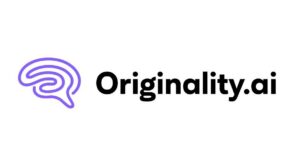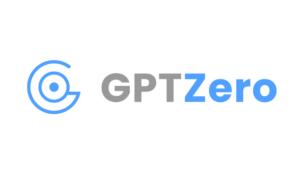In today’s digital landscape, distinguishing between human and AI-generated content has become increasingly challenging. AI detectors have emerged as essential tools for educators, content creators, and publishers who need to verify textual authenticity. With ChatGPT and other AI writing tools producing convincingly human-like text, these detection systems serve as a crucial line of defense.
Recent studies show that the best AI content detectors achieve accuracy rates exceeding 99% when identifying text from models like GPT-4. However, not all detectors perform equally—some struggle with edited AI content or texts modified by paraphrasing tools, while others may produce false positives. When evaluating these tools, it’s important to consider them as indicators rather than absolute proof of AI generation, ideally using them alongside other verification methods.
Top AI Content Detectors in November 2025
Finding reliable AI content detectors has become essential as artificial intelligence continues to transform content creation. These top-performing tools offer effective solutions for identifying AI-generated text with varying levels of accuracy and features.
Originality AI

Originality.ai is a robust content integrity platform designed specifically for digital marketers, SEO agencies, publishers, and professional bloggers. It combines AI-generated content detection, plagiarism scanning, and readability analysis in one streamlined solution—ensuring the authenticity and originality of written content in an era increasingly dominated by generative AI tools.
This platform excels at detecting AI-edited content with an impressive 97% accuracy rate. The tool specifically targets text that has been manipulated or modified by AI systems, addressing more sophisticated attempts to mask AI generation.
Unlike academic-oriented detectors, Originality.ai is tailored to meet the demands of content marketing, editorial teams, and SEO-focused operations. Its proprietary detection model—trained on millions of human and AI-written texts—delivers industry-leading accuracy, including the ability to flag humanized AI content from tools like GPT-4o, Claude, Quillbot, and more.
Users benefit from real-time scanning, bulk upload support, and integration-ready features like a Chrome extension, WordPress plugin, and API access, making it ideal for agencies and organizations managing large-scale publishing workflows.
Pros:
-
High Detection Accuracy: Industry-leading AI detection with over 99.9% accuracy and 0% false positives in recent benchmark tests.
-
Plagiarism + AI in One: Combines AI content detection and traditional plagiarism checking into a single, unified workflow.
-
Humanized AI Detection: Flags content that has been paraphrased or rewritten by AI humanizers—something most other tools miss.
-
Ideal for Teams: Features like scan history, team management, user tracking, and role assignments are built for editorial workflows.
-
SEO & Publisher Friendly: Includes readability scoring, fact-checking, and bulk scanning, making it perfect for scalable content operations.
-
Cross-Platform Tools: Offers a Chrome extension for scanning content in Google Docs, CMS platforms, and web editors.
-
Integration Options: Includes API access and a WordPress plugin for automated, site-wide content validation.
Cons:
-
No Free Tier: The platform does not offer a free version or trial, which can be a barrier for new or smaller users testing tools.
-
UI/UX Can Be Improved: The dashboard layout is sometimes cluttered, requiring a short learning curve to navigate efficiently.
-
Occasional False Positives: While rare, high-quality or stylized human writing can occasionally be misidentified as AI-generated.
-
Premium Pricing: More expensive than some competitors, especially for light users or solopreneurs with minimal scanning needs.
GPTZero

GPTZero is a versatile AI detection tool that can identify between human-written and AI-generated text with high accuracy. Developed by Princeton student Edward Tian and launched in 2023, the platform leverages advanced linguistic metrics such as perplexity and burstiness to analyze the complexity and variation within texts. These measures enable GPTZero to identify subtle patterns typical of AI language models like ChatGPT, GPT-4, Google Gemini, and LLaMA.
The platform caters to a wide range of users including educators, journalists, hiring managers, and developers who require reliable verification of content authenticity. GPTZero’s user-friendly interface enables customers to quickly upload documents or paste text for analysis.
The tool also integrates seamlessly with popular platforms like Canvas and Microsoft Word and offers a Chrome extension for convenient on-the-go detection. Additionally, GPTZero provides API access for organizations aiming to automate large-scale content verification workflows.
Ideal for academic integrity enforcement, content originality checks in publishing, resume validation during recruitment, and legal document scrutiny, GPTZero balances ease of use with robust AI detection capabilities. Although it is not infallible and occasional false positives occur, the platform is continually updated to improve detection accuracy and reduce errors.
Pros:
- User-Friendly Interface: Simplified process for text input and clear result interpretation.
-
Accurate AI Detection: Uses advanced linguistic analysis (perplexity and burstiness) to differentiate AI-generated and human-written content.
-
Multi-Platform Integration: Works with Canvas, Microsoft Word, and offers a Chrome extension.
-
API Availability: Supports automated, large-scale content verification for educational and corporate environments.
-
Flexible Pricing: Free tier available with paid plans starting at $15/month, catering to different user needs.
-
Wide Use Cases: Trusted by educators, journalists, hiring managers, and developers worldwide.
Cons:
-
Imperfect Accuracy: Some false positives and false negatives reported, especially with paraphrased AI content.
-
Limited Language Support: Primarily optimized for English prose, with reduced effectiveness in other languages.
-
Advanced Features Behind Paywall: More comprehensive detection and bulk scanning require subscription.
-
No Refund Policy: Users should evaluate the free version carefully before upgrading.
-
Dependence on Human Oversight: Best results achieved when paired with manual review to mitigate misclassification.
Detecting-ai.com

Detecting-AI is a browser-based AI content detector designed to identify text generated by popular large language models like ChatGPT, GPT-2, GPT-3, GPT-4, and Jasper. Supporting multiple input formats—including plain text, PDFs, Word documents, and direct URLs—the tool offers sentence-level detection with colored highlights and detailed percentage breakdowns of AI-generated content.
With a claimed accuracy of 98% and real-world performance that demonstrates solid detection for fully AI-generated text, Detecting-AI is ideal for students, educators, freelancers, and content reviewers who need a quick and private way to verify the authenticity of digital writing. Notably, the platform does not store or share any submitted content, making it a privacy-conscious solution in a field where data sensitivity is paramount.
While it excels in accessibility and usability, its limitations in detecting paraphrased AI content, lack of exportable reports, and minimal language support suggest it’s better suited for lightweight or casual use rather than enterprise or academic integrity enforcement.
Pros:
-
100% Free Access: Unlimited usage with no subscriptions or paywalls.
-
Multi-Model Support: Detects content from GPT-2, GPT-3, GPT-4, Jasper, and other AI generators.
-
Flexible Input Options: Accepts PDFs, DOCX files, text input, and URLs for analysis.
-
Sentence-Level Highlighting: Visually flags AI-generated segments with clear color-coding.
-
Privacy-Focused: Does not save, share, or reuse submitted text—ideal for sensitive content.
-
No Account Needed: Immediate access without sign-up, with optional Google login for convenience.
-
Ideal Use Cases: Suitable for students verifying their work, teachers reviewing essays, or writers ensuring originality.
Cons:
-
Overstates Accuracy: Claimed 98% detection rate doesn’t reflect real-world performance with paraphrased or hybrid content.
-
Weak Paraphrase Detection: Struggles to flag AI-written text that has been edited or reworded.
-
No Printable or Exportable Reports: Lacks features for documentation, auditing, or sharing results.
-
Limited Language Support: Currently optimized for English content only.
-
Basic Toolset: No advanced analytics, historical tracking, or integration with plagiarism platforms.
-
Model Dependency: May lag in recognizing content from emerging or fine-tuned AI models.
Copyleaks

Copyleaks is a versatile content integrity platform designed to detect plagiarism and identify AI-generated text through advanced AI-powered algorithms. Trusted by educators, writers, agencies, and businesses, it offers an intuitive interface that allows users to quickly scan documents for copied content and synthetic writing. With features like browser extensions, API and LMS integrations, and combined plagiarism detection capabilities, Copyleaks caters to a wide range of professional and academic use cases. Although primarily known for its plagiarism detection accuracy, Copyleaks has expanded into AI content detection to meet the growing demand for authentic content verification. Its user-friendly design and fast processing make it ideal for quick content audits, while its limitations in detection accuracy and usage caps suggest that it is best suited for moderate-volume users or those seeking a reliable first-pass screening tool.
Pros:
-
User-Friendly Interface: Simple and efficient platform for quick plagiarism and AI content detection.
-
Versatile Integrations: Supports API and Learning Management System (LMS) integration for seamless workflow incorporation.
-
Fast Processing Speed: Provides near-instantaneous results, suitable for quick scans and time-sensitive environments.
-
Combined Detection Features: Includes both plagiarism and AI-generated content detection on the same platform (though not simultaneously).
-
Browser Extension: Enables direct AI content checks on online web pages without manual copying.
-
Free and Unlimited AI Scanning: Allows unlimited AI content detection at no cost, making it accessible for casual users and educators.
-
Content Highlighting: Identifies specific text sections with a high probability of being AI-generated, enhancing review precision.
Cons:
-
Variable AI Detection Accuracy: Shows inconsistent confidence levels and may misclassify AI-generated text as human-written.
-
Separate AI and Plagiarism Checks: Users cannot run both detections simultaneously, which may slow down workflows.
-
Limited Daily Usage: Free and paid plans impose daily limits that can restrict high-volume users.
-
Privacy Concerns: Cloud-based storage of submitted content may raise confidentiality issues for sensitive documents.
-
Costly Premium Plans: Subscription fees may be prohibitive for individual users or small businesses on tight budgets.
-
Limited Language and File Format Support: May not support extensive language coverage or all document types without prior conversion.
-
Lack of Advanced Exclusion Options: Cannot exclude non-essential sections like title pages or bibliographies from plagiarism checks, sometimes leading to false positives.
Winston AI

Winston AI is a powerful content authenticity tool designed to help educators, editors, content creators, and businesses distinguish between AI-generated and human-written text. Leveraging advanced language detection models and linguistic pattern analysis, Winston AI scans pasted or uploaded text—including documents, PDFs, and images via OCR—to provide detailed, easy-to-understand reports. These reports highlight the likelihood of AI involvement through color-coded sentence analysis and offer additional insights like readability scores and plagiarism detection.
Ideal for academic institutions, journalism, digital marketing, and content publishing, Winston AI excels at identifying content generated by popular AI models such as ChatGPT and Gemini, even when the text has been edited or rewritten using paraphrasing tools. Its multi-language support (English, Spanish, French, German, and Portuguese) and team collaboration features make it versatile for global and organizational use. With features like shareable reports, browser extensions, and credit-based pricing plans, Winston AI balances robust AI detection with user-friendly design to maintain content integrity and originality.
Pros:
-
High Accuracy in AI Detection: Utilizes advanced linguistic algorithms and pattern recognition to identify AI-generated content with impressive precision, boasting claims of up to 99.98% accuracy.
-
Integrated Plagiarism Checker: Concurrent plagiarism detection enhances content verification, making it a comprehensive tool for academic and editorial use.
-
User-Friendly Interface: Simple copy-paste functionality and intuitive navigation make it accessible for users with varying technical expertise.
-
Multi-format Upload Support: Accepts text, PDFs, images (via OCR), and document files, supporting flexible workflows.
-
Color-coded Sentence Analysis: Visual breakdowns of AI likelihood per sentence (red, yellow, green) help users pinpoint specific areas of concern.
-
Team Collaboration & Shareable Reports: Allows credit sharing across teams and easy distribution of scan results to stakeholders via public links.
-
Affordable Pricing with Free Trial: Offers scalable plans starting at $12/month, including a 14-day free trial to test core features.
Cons:
-
Inconsistent Results on Human Text: Occasionally flags legitimate human-written content as AI-generated, especially with heavily edited or stylistically complex texts.
-
Feature Restrictions on Lower Plans: Key functionalities like plagiarism checking and report sharing are locked behind higher-tier plans, limiting free or basic users.
-
Limited Language Support: Currently supports only five languages, which may not suffice for all global users.
-
OCR and Handwritten Text Detection Limitations: While innovative, the handwriting AI detection feature is still developing and can be unreliable in practice.
-
Credit-Based Usage Limits: Users need to monitor credit consumption carefully, as large uploads can quickly exhaust monthly allowances.
-
Lacks Advanced Customization: Compared to some competitors, Winston AI offers fewer options for fine-tuning detection parameters or rewriter tools.
Sapling.ai

Sapling AI Detector is a browser-based AI content detection platform developed by experts from UC Berkeley, Stanford, Google, and Meta. Designed to help educators, content reviewers, and businesses verify the authenticity of written text, it specializes in identifying machine-generated content produced by advanced language models such as ChatGPT, Gemini, and Claude. The tool works by analyzing text and assigning a likelihood score that indicates the probability of AI authorship, helping users quickly distinguish between human-written and AI-generated content.
The platform supports both full-text and per-sentence analysis, highlighting suspicious phrases with color-coded shading to pinpoint exactly which parts of a document may have been created by AI. It integrates seamlessly via browser extensions, as well as Microsoft Word and Google Docs add-ons, allowing users to detect AI-generated text across web pages and documents efficiently. Additionally, Sapling offers API access for enterprises and developers aiming to incorporate AI detection into their workflows.
Ideal for educators seeking to prevent academic dishonesty, content creators maintaining originality, and businesses monitoring communication authenticity, Sapling AI Detector strikes a balance between ease of use and accuracy. While it offers a free tier with limited text length per analysis, upgrading to paid plans unlocks enhanced features such as grammar checking, AI writing assistance, and higher word limits.
Pros:
-
Accurate detection of AI-generated content from leading models including GPT-4o, ChatGPT, Gemini, and Claude.
-
Per-sentence AI detection with clear, color-coded highlights to identify machine-written phrases.
-
Multi-platform support via browser, Microsoft Word, and Google Docs extensions.
-
Free to use with generous initial limits, suitable for educators and casual users.
-
Real-time alerts and API integration available for enterprise use and automation.
-
Regularly updated to keep pace with evolving AI writing technologies.
-
Supports multiple languages for diverse detection needs.
Cons:
-
Occasional false positives, sometimes flagging human-written text as AI-generated.
-
Limited text length per analysis on the free plan, requiring paid subscription for larger documents.
-
Barebones feature set compared to more comprehensive AI detection platforms.
-
User interface can be distracting due to dual-purpose design as a writing assistant and detector.
-
Premium pricing may be steep for individual users needing advanced tools.
-
Occasional errors and crashes reported, which can disrupt workflow.
Crossplag

Crossplag AI Content Detector is a versatile platform designed to help individuals, educators, and businesses verify the originality of written content by detecting AI-generated text and plagiarism in multiple languages. Leveraging advanced machine learning algorithms and natural language processing, Crossplag analyzes text against an extensive global database containing billions of web pages and academic documents. Its AI detection model, based on the RoBERTa architecture and trained on over 1.5 billion parameters, evaluates content to provide a clear confidence percentage indicating the likelihood of AI authorship.
This tool is particularly useful for educators checking student assignments, content creators ensuring authentic articles, and businesses maintaining brand integrity in marketing copy. Supporting over 100 languages and including both direct and translational plagiarism detection, Crossplag offers a comprehensive solution for content verification worldwide. The platform balances powerful AI content identification with a user-friendly interface, allowing easy text input and fast results. While it offers limited free usage with mandatory account creation, flexible pricing plans are available for more frequent or high-volume users.
Pros:
-
Comprehensive AI and Plagiarism Detection: Combines AI-generated content identification and plagiarism checks in one platform, enhancing content authenticity assurance.
-
Multilingual Support: Detects AI and plagiarized content in over 100 languages, ideal for global use across academic and professional fields.
-
Clear Scoring System: Provides an intuitive confidence percentage to help users easily interpret results and make informed decisions.
-
Privacy and Security: Ensures user content confidentiality by not saving text by default, building trust for sensitive documents.
-
Flexible Pricing: Offers free basic usage and scalable plans that cater to individuals, educators, and businesses with varying needs.
Cons:
-
Accuracy Limitations: May produce inaccurate or inconclusive results in complex or mixed AI-human content, affecting reliability in some cases.
-
Account Required for Use: Free access requires sign-up, which might deter users seeking instant, no-registration tools.
-
Restricted Free Usage: Limits free checks to 1000 words per session, which may be insufficient for larger documents without paid plans.
-
No URL or Domain Scanning: Lacks functionality to scan entire websites or URLs for AI-generated or plagiarized content.
-
Still Maturing: The platform is evolving, and occasional errors or detection inconsistencies may occur compared to more established competitors.
Understanding AI Content Detectors

AI content detectors have become essential tools in a digital landscape increasingly populated with AI-generated text. These specialized systems are designed to analyze and identify content created by artificial intelligence models like ChatGPT, Gemini, and Claude.
How AI Detection Tools Work
AI detection tools use sophisticated algorithms to analyze text patterns and determine whether content was human-written or AI-generated. These tools typically employ four main detection methods:
- Natural Language Processing (NLP): Detectors use NLP to analyze writing patterns, sentence structures, and linguistic features that might indicate AI authorship.
- Stylometric Analysis: This method examines the distinctive style elements in the text, including vocabulary diversity, predictability, and grammar patterns.
- Machine Learning Models: Many detectors are trained on both AI and human-generated content, allowing them to compare new text against their training data.
- Entropy Measurements: These tools evaluate the randomness and predictability of text, as AI-generated content often follows more predictable patterns than human writing.
When analyzing content, detectors break down the text, examine its structure, and assign probability scores indicating how likely it is to be AI-created. The most advanced detectors can identify AI content even when it’s carefully mixed with human-written text or has been manipulated by text spinners.
Why AI Detection Matters Today
AI detection has become increasingly important for several critical reasons:
- Academic Integrity: Educational institutions use AI detectors to ensure student submissions are original work, not generated by AI tools.
- Content Authenticity: Publishers and businesses need to verify that their content is authentic and trustworthy, particularly when publishing factual information.
- Fraud Prevention: AI detectors help identify potentially deceptive content in areas ranging from news articles to financial documents.
- Security: These tools can identify AI-generated security threats, including deepfakes and synthetic media that could be used for scams or disinformation.
- Regulatory Compliance: With increasing regulations around AI-generated content, detection tools help organizations maintain compliance with transparency requirements.
The accuracy of AI detection tools varies significantly. The best detectors claim over 99% accuracy for identifying content from models like GPT-4, but most perform less reliably when dealing with edited or paraphrased AI text. This is why many experts recommend using multiple detection methods and combining AI tools with human judgment for the most reliable content verification.
Free AI Detection Options
- TrueText offers a beginner-friendly interface with a 76% detection accuracy rate. The streamlined design makes it accessible for users new to AI detection tools, providing straightforward results without overwhelming technical details.
- AI Text Classifier provides basic detection capabilities with a 60% accuracy rate. While less comprehensive than premium solutions, this free tool offers an accessible entry point for those needing fundamental AI content screening without financial investment.
Best AI Detectors for Educational Institutions
Educational institutions face unique challenges in maintaining academic integrity with the rise of AI-generated content. The following tools are specifically designed to help schools, colleges, and universities identify AI-written assignments and ensure original student work.
Tools with Plagiarism Integration
Copyleaks focuses primarily on academic and professional use cases by seamlessly integrating plagiarism detection with AI content analysis. This dual functionality allows educators to identify both copied content and AI-generated text within a single platform. The tool thoroughly scans AI-generated content for potential issues, making it suitable for schools and publishers who need comprehensive content verification.
Crossplag offers multi-language support and leverages deep learning algorithms for nuanced detection of AI content. This tool is particularly beneficial for educational institutions handling diverse content in multiple languages. Its sophisticated approach helps identify subtle instances of AI generation that might otherwise go undetected in traditional plagiarism checkers.
Options for Academic Integrity
GPTZero has become widely recognized for its specialized use in education, offering batch processing capabilities and perplexity analysis. These features make it ideal for academic settings where instructors need to evaluate multiple student submissions efficiently. Its focus on educational applications has made it a popular choice for institutions prioritizing academic integrity.
Originality.AI delivers high accuracy in detecting AI-edited content, with a reported 97% accuracy rate. This tool is particularly valuable for educational institutions focusing on academic integrity since it can identify even partially edited AI text. The ability to detect subtle AI modifications makes it effective for maintaining standards of original work.
Sapling provides real-time content analysis and scoring systems that make it suitable for educators to verify content authenticity quickly. The immediate feedback allows instructors to efficiently process assignments and determine whether they contain AI-generated elements, making it a practical tool for classroom settings.
Industry-Specific AI Content Detection Tools
As AI content generation becomes more sophisticated, different industries require specialized detection tools that address their unique challenges. These specialized solutions offer features tailored to specific professional environments and use cases.
Enterprise Solutions
Enterprise organizations face unique challenges when implementing AI content detection across large teams and complex workflows. Several tools have emerged to address these specific needs:
- Sapling.ai provides comprehensive enterprise solutions with detailed sentence-level detection capabilities. It’s designed with low false positive rates, making it ideal for high-volume content environments where accuracy is critical. The platform offers extensive integration options that work seamlessly with existing enterprise systems.
- Writer.com delivers corporate-focused AI detection that efficiently identifies AI-generated text within business communications. The tool supports quality control efforts across various business writing formats, including marketing materials, reports, and internal documentation.
- Winston AI offers broad integration features that extend beyond basic text analysis. Its solution combines AI text and image detection with plagiarism checking, creating a comprehensive content verification system suitable for enterprise-level implementation. This multifaceted approach helps large organizations maintain content integrity across different departments.
Publishing and Media Detectors
Publishing and media companies require highly sophisticated AI detection tools to maintain their reputation for authentic, original content:
- Copyleaks specializes in meeting the unique needs of academic publishers and media organizations. It combines robust plagiarism checking with advanced AI detection capabilities, helping maintain content integrity throughout the editorial process. The platform is particularly valuable for publishers who need to verify large volumes of submitted content.
- Originality AI excels at identifying AI-edited content with a remarkable 97% accuracy rate. This capability is particularly valuable in editorial workflows where content might be partially generated or edited by AI tools. Its sensitivity to subtle AI manipulation makes it a preferred choice for quality-focused publishers.
- Hive provides significant value to media companies through its ability to detect AI-generated content across multiple formats, including text, images, and videos. As multimedia content becomes increasingly prevalent, this comprehensive detection approach helps media organizations maintain authenticity across all content types.
| Tool | Industry Focus | Key Features | Accuracy | Pricing |
|---|---|---|---|---|
| Sapling.ai | Enterprise | Sentence-level analysis, integration capabilities | High | Enterprise pricing |
| Writer.com | Corporate teams | Business writing focus, quality control | High | Subscription-based |
| Winston AI | Enterprise | Text/image detection, plagiarism checking | High | Paid plans |
| Copyleaks | Academic publishing | Content integrity, plagiarism detection | High | Paid subscription |
| Originality AI | Publishing, editorial | AI-edited content detection | 97% | Paid plans |
| Hive | Media, multimedia | Text, image, video detection | High | Custom pricing |
Key Features to Look for in AI Detectors
When evaluating AI content detectors, certain key features can make the difference between reliable detection and missed AI-generated content. Understanding these critical elements helps users select the right tool for their specific needs.
Accuracy and Reliability Metrics
AI detector accuracy is the most crucial factor when selecting a tool. The best detectors demonstrate verified accuracy rates above 80%, with top performers like Detecting-ai.com V2 achieving near-perfect 99% accuracy based on extensive testing across 365 million samples. When evaluating tools, look for independent validation studies rather than just company claims. False positive rates (incorrectly flagging human content as AI-generated) are equally important to consider—tools with rates below 1% prevent legitimate content from being unnecessarily flagged. Reliability across different content types, lengths, and complexity levels ensures consistent performance regardless of the text being analyzed.
Multi-Model Detection Capabilities
The most effective AI detectors can identify content from various AI models, not just one specific generator. Leading tools can detect outputs from multiple AI sources including ChatGPT, GPT-4, Claude, Gemini Pro, and other emerging models. This multi-model capability is essential as content creators often use different AI platforms for various purposes. Advanced detectors employ multi-stage analysis processes that examine different text characteristics to improve detection reliability across all AI platforms. This comprehensive approach ensures that content doesn’t slip through detection simply because it was generated by a less common or newer AI system. When evaluating tools, verify their documented ability to detect content from the specific AI models your organization needs to monitor.
How to Evaluate AI Detector Performance
When selecting an AI content detector, understanding how to properly evaluate performance metrics is crucial for making an informed decision. These tools vary significantly in their capabilities and accuracy levels.
Detection Accuracy Benchmarks
Accuracy benchmarks provide the most reliable indicator of an AI detector’s effectiveness. When evaluating detection accuracy, consider these key metrics:
- Overall Accuracy Rate: Top-performing detectors like Detecting-ai.com V2 claim 99% accuracy based on extensive testing across 365 million samples.
- Model-Specific Performance: Originality AI demonstrates 97% accuracy, with particular strength in identifying AI-edited content that might fool less sophisticated tools.
- Academic Standards: Both Copyleaks and GPTZero achieve 80% accuracy rates, making them reliable options for educational environments where content verification is critical.
- Baseline Performance: The GPT-2 Output Detector manages 60% accuracy using machine learning techniques, representing a more basic level of detection capability.
When reviewing accuracy claims, look for published performance metrics and independent evaluations rather than relying solely on marketing materials. The most transparent tools will provide detailed information about their testing methodologies and sample sizes.
False Positive Rates
False positives—when human-written content is incorrectly flagged as AI-generated—can be particularly problematic depending on your use case. Consider these factors when evaluating a detector’s false positive performance:
- Sentence-Level Analysis: Tools like Sapling.ai focus specifically on minimizing false positives by analyzing content at the sentence level rather than making judgments about entire documents.
- Confidence Scoring: Look for detectors that provide detailed confidence scores rather than simple binary results, allowing you to make more nuanced decisions about borderline cases.
- Multi-Stage Verification: ZeroGPT employs multi-stage analysis techniques to reduce false positives while maintaining high detection rates for AI content.
- User Control: The best tools allow users to adjust sensitivity thresholds based on their specific needs, balancing between catching all potential AI content and avoiding false flags.
False positive rates are particularly important in academic contexts where wrongful accusations of using AI can have serious consequences. When testing potential detectors, run samples of known human content through the system to assess false positive tendencies before implementation.
Limitations of Current AI Detection Technology
While AI detection tools have made significant strides, they still face substantial challenges in accurately identifying AI-generated content. These limitations affect their reliability and practical application across various contexts.
False Positives and Accuracy Concerns
False positives represent one of the most significant challenges in AI detection technology. Many current tools incorrectly flag human-written content as AI-generated, creating frustrating experiences for users. This issue is particularly problematic in academic settings where students’ genuine work might be wrongly identified as AI-created.
AI detectors rely on machine learning models to recognize patterns like repetitiveness, lack of emotional depth, and specific phraseology. While these systems can quickly process large volumes of content with consistent flagging methods, they struggle with nuanced writing that mimics or coincidentally resembles AI patterns. According to testing data, even the most accurate detectors on the market can produce false positives up to 20% of the time with certain types of human content.
The accuracy rates vary significantly between tools, with leading options like Detecting-ai.com V2 claiming 99% accuracy based on 365 million samples, while others hover around 80-85% accuracy. This inconsistency creates uncertainty for users trying to determine which results to trust.
Common Detection Challenges
Several fundamental challenges plague even the most sophisticated AI detection tools:
Sophistication of AI models poses a primary obstacle for detection technology. Advanced AI systems like GPT-4 can produce content that closely resembles human writing, making the distinction increasingly difficult. The natural language processing capabilities of newer models have improved dramatically, enabling them to avoid many telltale patterns that earlier detectors relied on.
Data quality and quantity directly impacts detector effectiveness. AI detectors require extensive training data to accurately identify patterns, but the rapid evolution of AI writing models means this training data quickly becomes outdated. Without constant updates using new samples from the latest AI systems, detectors lose accuracy over time.
Contextual understanding remains a significant weakness in current detection technology. While AI detectors excel at analyzing writing patterns, they struggle to grasp nuanced context-dependent content. This limitation causes problems when evaluating specialized writing with unique terminology or creative works with unconventional styles.
Evasion techniques have emerged specifically to circumvent detection. Users can intentionally manipulate AI-generated content by breaking it into smaller segments, paraphrasing, or employing hybrid approaches that mix AI and human writing. These strategies significantly reduce detection accuracy, with some studies showing detection rates dropping below 50% when specific evasion methods are employed.
Evolving AI Writing Methods
AI writing technology continues to advance at a remarkable pace, creating a perpetual cat-and-mouse game between generators and detectors. Several key developments are making detection increasingly challenging:
Improved natural language generation has reduced many of the linguistic markers that earlier detectors relied on. Newer AI models produce more varied sentence structures, better handle emotional content, and create more unpredictable outputs that closely mimic human writing patterns.
Sophisticated evasion techniques have become more accessible and effective. Content creators can now use specialized tools designed specifically to bypass AI detection, including paraphrasing tools that preserve meaning while completely restructuring text patterns that might trigger detection.
Multimodal content generation represents a frontier that many detectors aren’t equipped to handle. Modern AI systems can seamlessly integrate text with images and videos, creating content packages where the AI-generated elements might be distributed across different media types. This approach effectively bypasses text-only detection methods.
Constant model updates from AI developers mean detection tools must continuously evolve to remain effective. While Originality AI maintains a 97% accuracy rate for detecting AI-edited content and Winston AI offers full-scope detection across text and images, even these advanced tools face challenges keeping pace with the rapidly evolving capabilities of content generation systems.
The limitations of AI detection technology highlight the importance of using these tools as guides rather than definitive proof of content origins. Organizations and individuals relying on content verification should consider implementing multiple detection methods, including human review, to maximize accuracy and minimize false assessments.
How to Use AI Detection Results Effectively
Understanding how to properly interpret and act on AI detection results is crucial for making informed decisions about content authenticity. Modern AI detectors provide sophisticated analysis, but knowing how to use these insights effectively requires both technical understanding and practical judgment.
Interpreting Detection Scores
Most AI detectors provide a probability or percentage score indicating how likely text is AI-generated. Scores above 50% typically suggest AI authorship but fall into a gray area where manual interpretation becomes necessary. When evaluating these scores, it’s important to consider that detection results exist on a spectrum rather than as binary outcomes. For instance, Surfer AI Content Detector flags content as AI-written if the score exceeds 50%, but proper interpretation requires judgment due to overlapping probabilities. The context of the content, writing style variations, and the possibility of mixed human-AI content all affect how these scores should be interpreted.
Manual Review Best Practices
- Complement Detection with Human Judgment: Use AI scores as a guide rather than a definitive verdict. Even tools with 99% accuracy rates like Detecting-ai.com V2 should be paired with human oversight.
- Check Content Context: Look for inconsistencies, unnatural phrasing, or abrupt changes in style that might indicate AI generation or editing.
- Use Multiple Tools: Cross-verify with several detectors to reduce false positives or negatives. Tools like Copyleaks, ZeroGPT, and GPTZero employ different detection methods, providing more comprehensive verification.
- Understand Tool Limitations: Recognize that detection tools have varying accuracy depending on the AI model and content type. For instance, Originality AI specializes in detecting AI-edited content with 97% accuracy, while TrueText offers moderate accuracy (76%) better suited for quick checks.
- Consider Intent and Usage: For educational or professional settings, pair detection with plagiarism checks and author interviews if necessary. Tools like GPTZero, popular in educational contexts, offer features such as perplexity analysis to evaluate writing style and authorship likelihood.
This multifaceted approach ensures more reliable identification of AI-generated content, balancing automated analysis with human oversight for optimal results across various professional environments.
The Future of AI Content Detection
Advancing Detection Technologies
AI content detection technology is evolving rapidly to keep pace with increasingly sophisticated AI writing models. Next-generation detectors are implementing more advanced machine learning algorithms that can identify subtle patterns in text generation. These systems are moving beyond simple statistical analysis to incorporate deep learning networks capable of recognizing AI-generated content with greater precision. Future detection tools will likely achieve accuracy rates above the current 99% benchmark by analyzing multiple dimensions of content simultaneously.
Cross-Modal Detection Capabilities
The next frontier in AI detection extends beyond text to include multi-modal content analysis. Advanced detection systems are beginning to integrate capabilities for identifying AI-generated images, videos, and audio alongside text. This cross-modal approach will address the growing challenge of synthetic media, where content creators might combine human and AI elements across different formats. According to industry projections, the AI content detector market is expected to reach $255.74 billion by 2032, reflecting the growing demand for comprehensive detection solutions.
Adaptive Learning Systems
Future AI detectors will feature self-improving algorithms that continuously adapt to new content generation techniques. These adaptive systems will regularly update their detection models based on the latest AI writing patterns, ensuring they remain effective even as generation technology evolves. Some emerging detection platforms already incorporate feedback mechanisms that refine their algorithms when new AI models are released, creating a more responsive defense against undetected AI content.
Integration With Content Workflows
Detection technology is increasingly becoming embedded within content creation and management systems. Rather than functioning as standalone tools, future AI detectors will be integrated directly into content management systems, word processors, and publishing platforms. This integration will allow for real-time verification during the creation process, providing immediate feedback to users about potential AI-generated content before publication.
Regulatory and Ethical Frameworks
As AI-generated content becomes more prevalent, industry standards and regulatory frameworks for AI detection are being developed. Educational institutions, media organizations, and government bodies are establishing formal guidelines for acceptable use of AI content and appropriate disclosure requirements. These emerging frameworks will likely standardize how detection results are interpreted and acted upon, particularly in sensitive contexts like academia, journalism, and legal documentation.
Enhanced Transparency Features
Future detection tools will offer more granular explanations of why content was flagged as AI-generated. Instead of simply providing a probability score, advanced systems will highlight specific textual elements, sentence structures, or pattern distributions that triggered detection. This transparency will help users better understand detection results and make more informed decisions about flagged content, reducing confusion around false positives and improving trust in detection systems.
Key Takeaways
- The best AI content detectors achieve accuracy rates exceeding 99%, with top performers like Detecting-ai.com V2 having been tested on 365 million samples to validate their reliability.
- Different tools excel at specific detection challenges – Originality AI has a 97% accuracy rate for detecting AI-edited content, while specialized tools like GPTZero (80% accuracy) are popular in educational settings for batch processing.
- False positives remain a significant limitation of current AI detection technology, with even advanced tools incorrectly flagging human-written content up to 20% of the time in certain contexts.
- For optimal results, experts recommend using multiple detection tools alongside human review rather than relying on a single detector as definitive proof of AI authorship.
- The AI detection market is evolving rapidly with next-generation tools moving beyond text analysis to include multi-modal detection capabilities for images, videos, and audio content.
Conclusion: Selecting the Right AI Detector for Your Needs
As AI-generated content becomes increasingly sophisticated the need for reliable detection tools has never been more critical. The best AI content detectors offer high accuracy rates specialized features and user-friendly interfaces that cater to specific industry needs.
When choosing an AI detector consider your specific requirements including accuracy rates model coverage and integration capabilities. Remember that even the most advanced tools should be used as part of a broader verification approach rather than standalone solutions.
Whether you’re an educator maintaining academic integrity a publisher ensuring content authenticity or an enterprise protecting brand reputation there’s an AI detection tool designed to meet your needs. As detection technology evolves alongside AI writing capabilities staying informed about the latest advancements will help you make the most effective choice for your content verification strategy.
Note: When you make a purchase using links on our site, we may earn an affiliate commission at no cost to you
Frequently Asked Questions
What are AI content detectors and why are they important?
AI content detectors are tools that analyze text to determine whether it was created by artificial intelligence or humans. They’ve become essential as AI writing tools like ChatGPT produce increasingly human-like content. These detectors help educators maintain academic integrity, publishers ensure content authenticity, and businesses prevent fraud. They’re particularly important for verifying original work and complying with emerging regulations around AI-generated content.
How do AI content detectors work?
AI content detectors use sophisticated algorithms including Natural Language Processing (NLP), stylometric analysis, machine learning models, and entropy measurements. They analyze text patterns, sentence structure, vocabulary usage, and statistical features to identify AI-generated content. These systems compare the analyzed text against known patterns of AI writing and assign probability scores indicating the likelihood of AI authorship.
How accurate are AI content detectors?
The best AI content detectors claim accuracy rates between 80-99%, with top performers like Detecting-ai.com V2 reaching 99% accuracy for content from advanced models like GPT-4. However, accuracy varies significantly when dealing with edited or paraphrased AI content. Most detectors perform best with unmodified AI text and should be used as indicators rather than definitive proof of AI generation.
What features should I look for in an AI content detector?
Look for verified accuracy rates above 80%, multi-model detection capabilities to identify content from various AI systems, and sentence-level analysis that provides specific feedback. Other valuable features include confidence scoring, user controls to adjust detection thresholds, and integrations with existing workflows. The best detectors also offer clear explanations of their findings to minimize misinterpretation.
Which AI content detectors are best for educational institutions?
Copyleaks is ideal for educational settings with its plagiarism detection and AI content analysis integration. GPTZero offers batch processing for multiple student submissions. Originality.AI excels at identifying AI-edited content with 97% accuracy. Crossplag provides multi-language support with deep learning algorithms. These tools help institutions maintain academic integrity while offering features specifically designed for evaluating student work.
Are there industry-specific AI content detection tools?
Yes, several tools cater to specific industries. Enterprise organizations benefit from Sapling.ai’s detailed sentence-level detection and integration capabilities. Publishing and media sectors rely on Copyleaks and Originality AI to maintain content integrity. Writer.com focuses on business communications, while Winston AI combines text and image detection with plagiarism checking. Hive supports multimedia content detection across text, images, and videos.
What are the limitations of current AI detection technology?
Even the best detectors produce false positives up to 20% of the time, especially with nuanced human writing. Accuracy decreases with edited or paraphrased AI content. The rapid evolution of AI writing methods and emerging evasion techniques further challenge detection efforts. As AI writing technology advances, detection becomes increasingly difficult, requiring a combination of tools and human judgment for reliable verification.
What does the future of AI content detection look like?
Future detection technologies will incorporate more sophisticated machine learning algorithms and deep learning networks for greater precision. We’ll see cross-modal detection capabilities that analyze text, images, videos, and audio together. Adaptive learning systems will continuously improve based on new content generation techniques. Integration with content management systems, standardized regulatory frameworks, and enhanced transparency features will make these tools more effective and trustworthy.

Alessio Rigoli is the founder of AGR Technology and got his start working in the IT space originally in Education and then in the private sector helping businesses in various industries. Alessio maintains the blog and is interested in a number of different topics emerging and current such as Digital marketing, Software development, Cryptocurrency/Blockchain, Cyber security, Linux and more.
Alessio Rigoli, AGR Technology
![logo-new-23[1] logo-new-23[1]](https://agrtech.com.au/wp-content/uploads/elementor/thumbs/logo-new-231-qad2sqbr9f0wlvza81xod18hkirbk9apc0elfhpco4.png)

